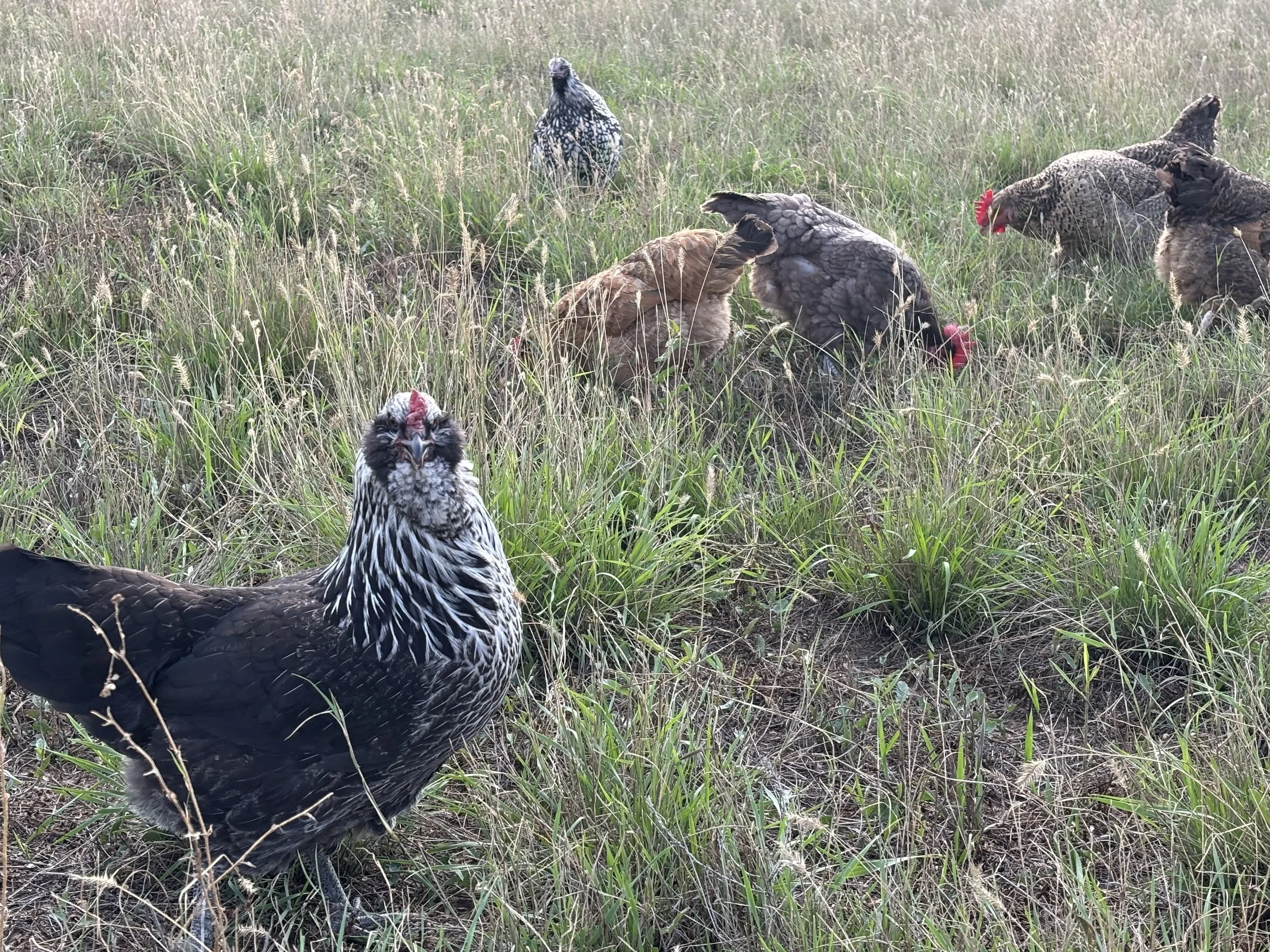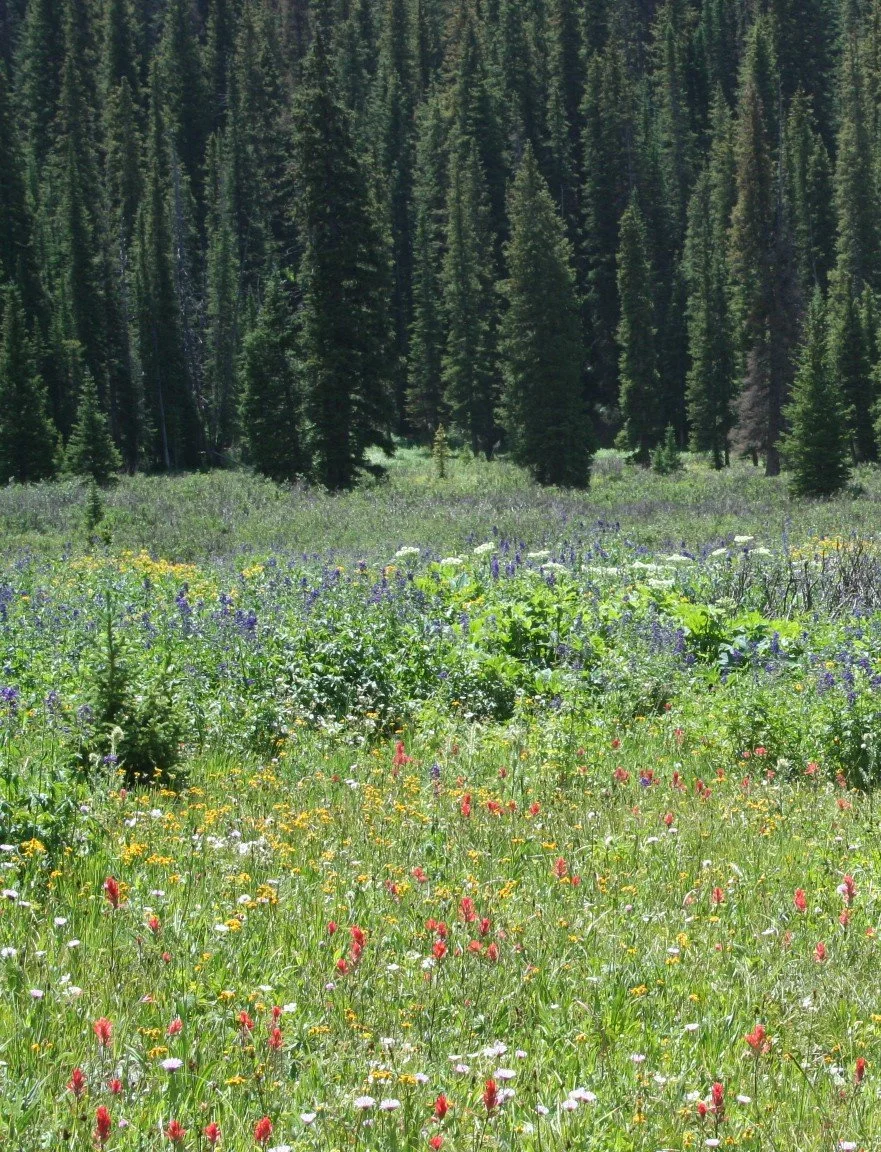Regenerative Agriculture
What is it? How is it different than conventional agriculture?
Simply put, to regenerate something is to restore it to a better state. So regenerative agriculture seeks to restore your soil and ecosystem to something better than it was before. While conventional agriculture seeks to grow things or graze animals from the land using any means necessary to achieve crop and grazing success, regenerative agriculture seeks to mimic the natural systems of grazing and growth displayed in nature to continually restore the land as it is farmed and harvested.
This is accomplished by following the 5 tenets or principles of regenerative agriculture:
Minimizing soil disturbance
Integrate animals
Build diversity
Armor the soil
Keep Living roots in the soil
Minimizing Soil Disturbance
Have you ever driven by a farm where they are plowing up the entire field and all that is left is dry, light brown dirt? Or have seen the amount of pesticides and herbicides that line the aisles in our stores? Well, regenerative agriculture seeks to minimize soil disturbances of all kinds by practicing minimum till/no till practices and limiting use of herbicides and pesticides This protects the relationship between the valuable microbes, large and small organisms and the soil (officially called the soil food web) and allows the soil to continually regenerate.
Here at Ruby June Flowers, we are committed to limiting our tilling to an initial shallow till and then broad forking the soil from there after which protects the soil microbes and beneficials in the soil. We are also committed to limited to no use of pesticides and herbicides. Instead, we use molasses to raise the Brix numbers on our plants (which basically makes them less tasty to destructive bugs), making sure our planting methodology includes plants that attract beneficial pollinators and predatory bugs (like lady bugs and lace wings), and do our best to limit the opportunity for weeds to grow (ignore all the weeds in the picture to the right - we are still learning how to defeat the mighty bind weed!).
Integrate Animals
If you get out into nature anywhere, whether it be the mountains or grasslands, you will see animal and insect activity. It may be large animals like deer, antelope or elk or smaller animals like birds or squirrels or bugs like bees and grasshoppers. You will see lots of diversity and also see how each animal species shapes the ecosystem they are in. Integrating animals onto our land allows us to come one step closer to mimicking nature. Our sheep graze our pasture and flower rows when they’re not in bloom. Their hooves add small depression points in the soil like an antelope or a deer would, which acts like a small aeration of the soil and a small water catchment. Their poop degrades easily into the soil and feeds it. The rotational pattern of their grazing of an area gives the plants a good trim which forces the plants to put more energy into the roots, leading them to get stronger and then they are moved to the next section, which allows the plants to recover and grow stronger. The chickens aerate the earth by scratching it, protect the land by eating destructive bugs (especially grasshoppers), and their poop also feeds the soil.
Integrating animals isn’t only done by putting animals on the land. It is also accomplished by encouraging native wildlife like planting native trees and shrubs to increase the bird populations.
Build Diversity
This meadow in the Never Summer Wilderness demonstrates that diversity is a huge part of nature. One of the goals of regenerative agriculture is to increase diversity in as many areas as possible: increasing diversity in the soil as far as minerals, composition, organic matter and microbial and insect activity, increasing diversity in the animals that engage with your ecosystem, increasing diversity in what I grow on the land in terms of flowers as well as native plants as well as cover plants.
Armoring the Soil
Soil needs to be protected in several different ways:
its surface temperature - If the soil temperature gets too hot, it can kill essential microbes
its evaporation rate - If the soil isn’t covered, the rate of evaporation is much higher
Its weed growth - when the soil isn’t covered, the weed growth is much higher
Here at Ruby June Flowers, we are armoring our soil by adding cover crops and leaf and wood chip mulches to reduce the soil evaporation rate and the soil surface temperature. As these feed and degrade in our soil, it increases the earthworm and microbial populations. When we first dug in our field, there was not a worm to be seen. Now there are worms everywhere, which is a sign that we are on the right track.
Keep Living Roots in the Soil
Soil needs to be fed consistently to stay alive. That’s why its important to keep planting! A bare field doesn’t benefit the soil at all. By adding diversity in cover crops and by increasing how long they stay in the soil, we feed the soil biology and increase the nutrient cycle in the soil.
THIS IS A JOURNEY, NOT A DESTINATION
The pursuit of regenerative agriculture is a journey. You’ve never just “arrived”. There will always be new challenges that we face. We are constantly learning, changing, researching, evolving our methods to what our soil needs and always looking for more ways to add diversity and soil armor. If you want to know more about our journey and what we are in the process of learning now, feel free to check out our blog!










